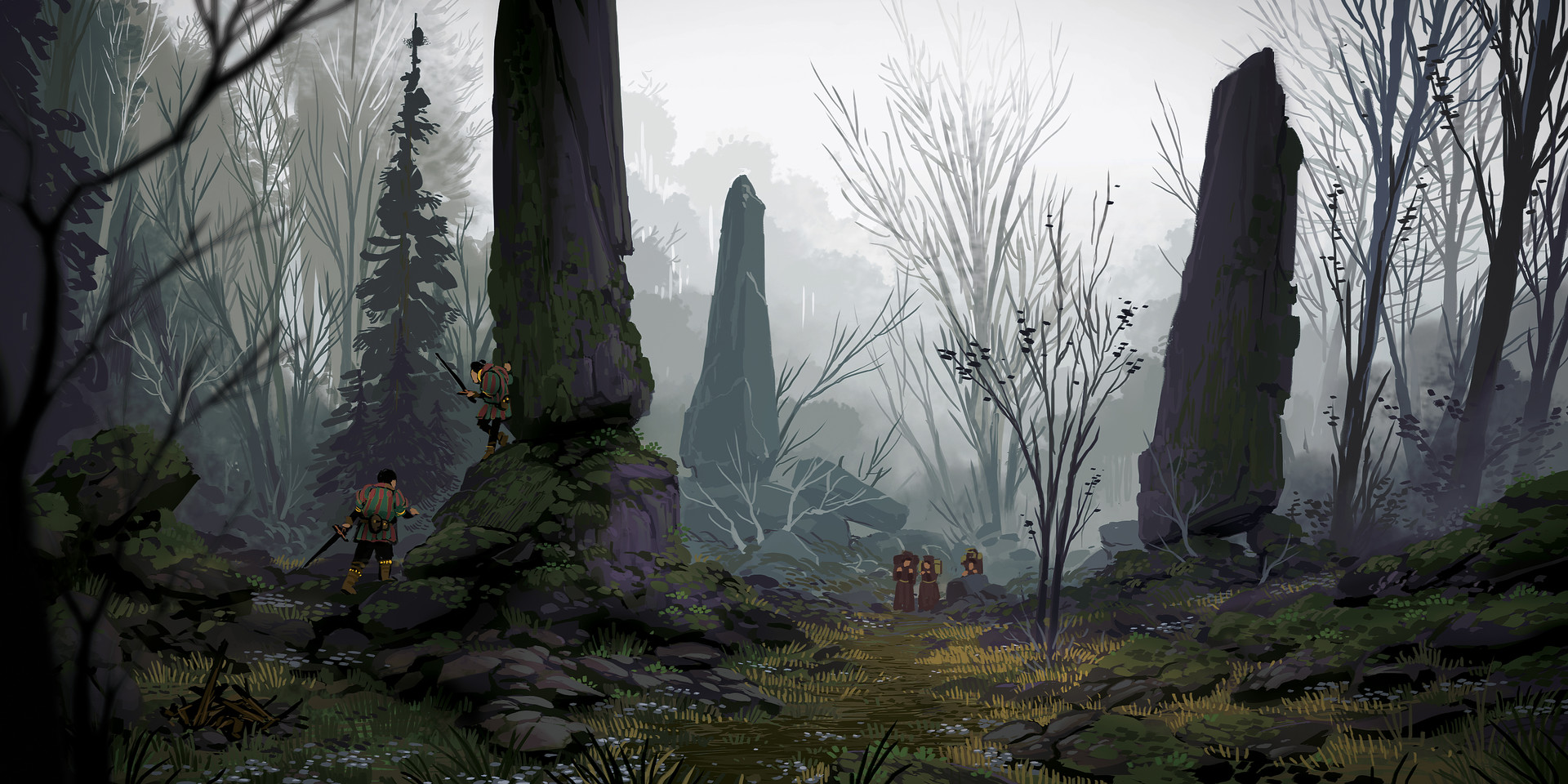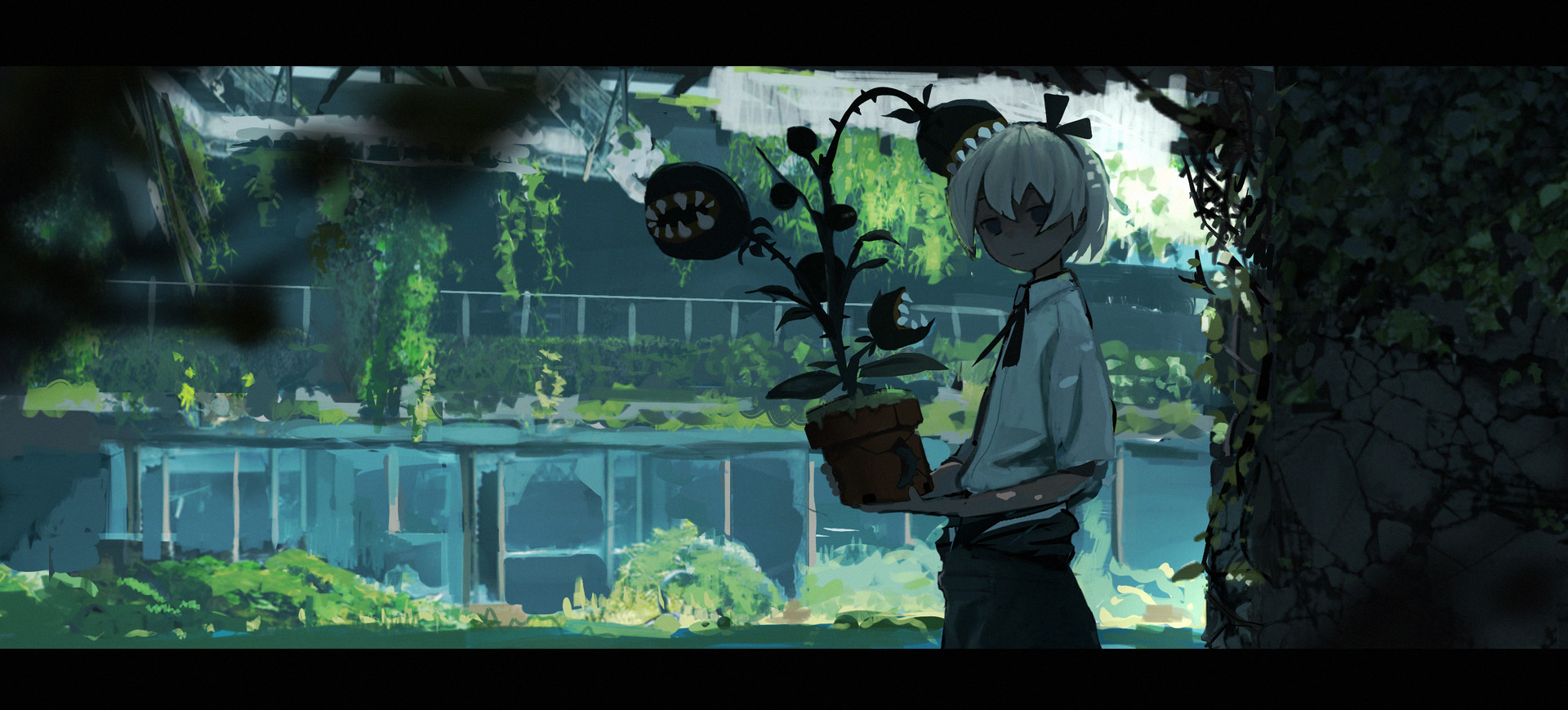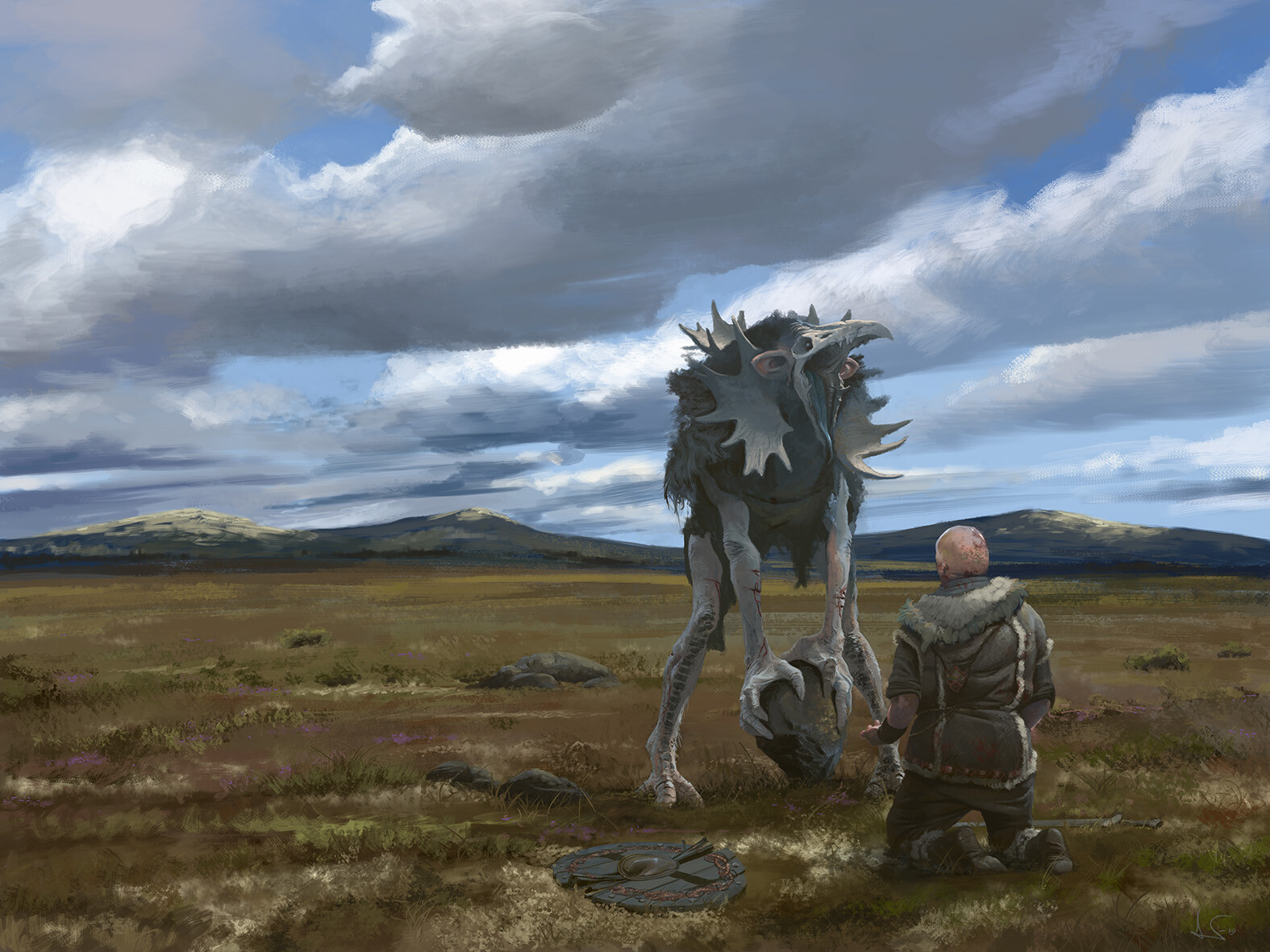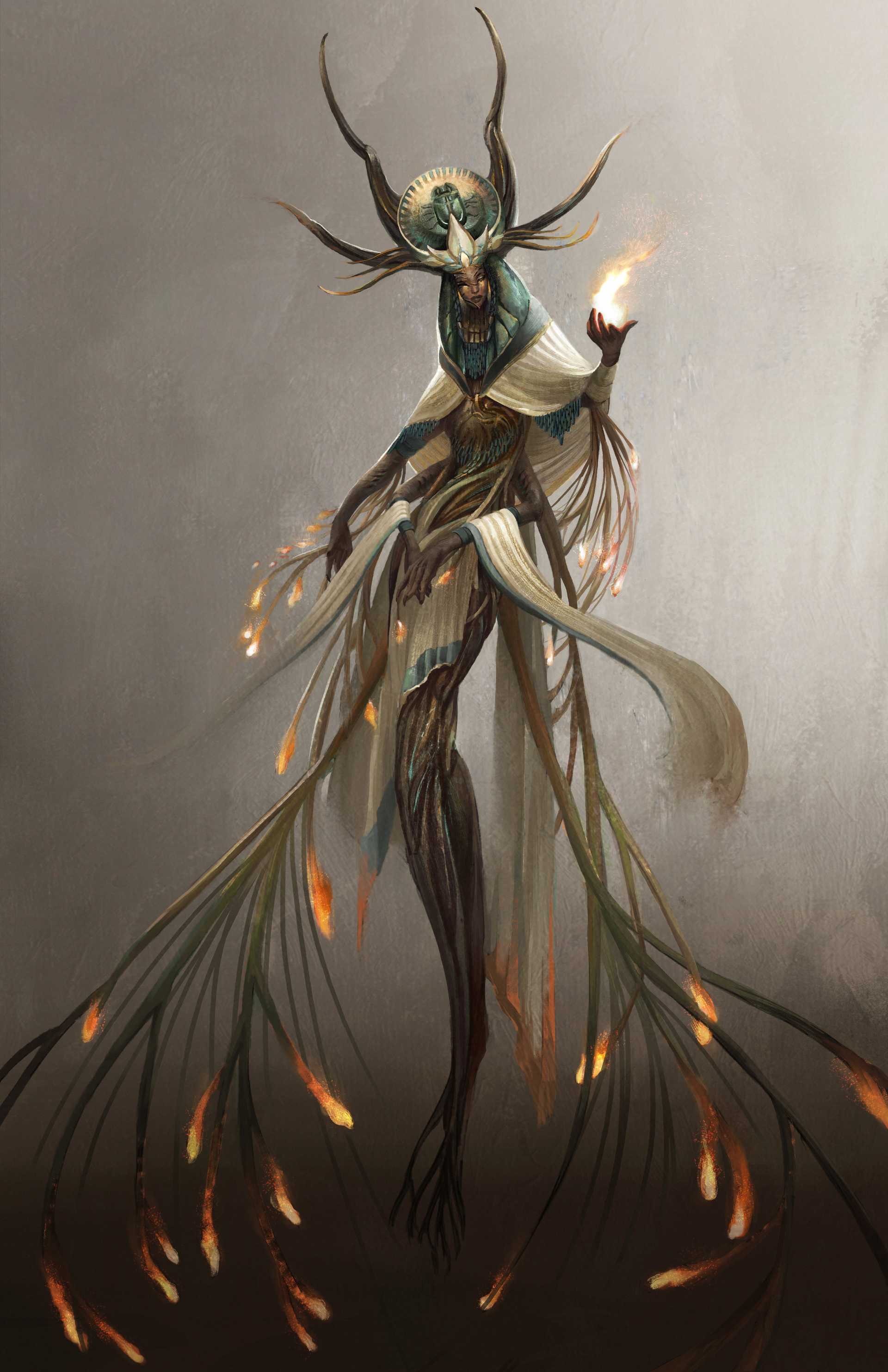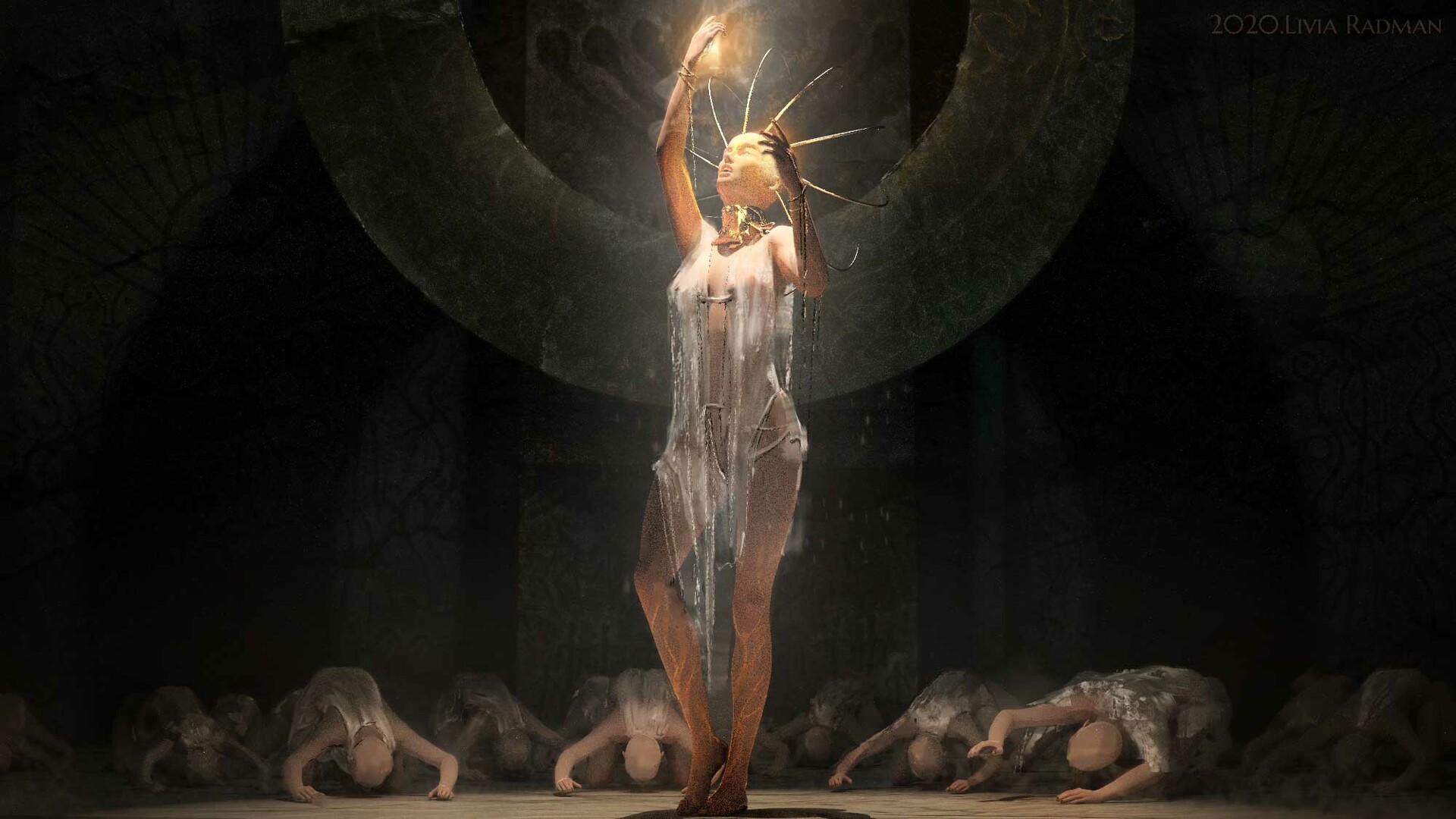Starting Point
Spell: A specific, codified form of magic, somewhat limiting a caster's flexibility but maximizing speed and allowing for much more dramatic effects. Most spells can appear differently when cast, depending on the caster's personality, or can be modified in specific ways while casting.
Mana: The arcane mental energy that is infused into a spell to 'prepare' it in the caster's mind. Only prepared spells can be cast. Most casters also have a limit of mana they can hold at any given time.
Preparing spells: A caster can prepare spells during an hour long ritual, which looks different depending on the individual. During this time, they can prepare any spell they know, so long as they have the mana for it. Additional mana can be invested to enhance the spell, and prepared spells can be discarded during this time to regain their mana. Prepared spells do however count against a caster's maximum mana, but are ready to be cast. When cast, a spell is no longer prepared, and the mana is expended.
 |
| Cliffside Ritual by space gooose |
Casting
Turning the idea into a reality. During the casting time, a caster may use either skill casting to alter the spell. This incurs risks, as a low skill roll can weaken their spell. They can also use a class ability instead. Skills usually gain a bonus depending on which kind of arcane focus they are cast through.
Magic Skills
Gesture: complex motions that form the spell more rapidly in reality. Can increase (or decrease!) a spell's casting speed.
Incantation: ethereal words, spoken to draw a spell deeper into reality. Can increase (or decrease!) a spell's range.
Sigil: the linguistic form of a spell, focused upon to draw it more sharply into reality. Can increase (or decrease!) a spell's magnitude as specified in the description.
Arcane Focus
A tool which allows mortals to cast spells, by giving the magic a soulless conduit into reality. The arcane focus can be any non-living item you can lift. It takes a week of dedicated rituals to attune a new arcane focus. Many items will give bonuses if attuned and used as a focus. These take one hand to hold and use, unless otherwise noted.
Magic wand: the brightened end of this otherwise plain rod can grant +1 to Sigil or Gesture rolls, depending on how it is used.
Silver bell: this fine bell's unearthly toll can grant +1 to Gesture or Incantation rolls, depending on how it is used.
Tome of magic: this instructive book can grant +1 to Incantation or Sigil rolls, depending on how it is used.
Runic sword: this blade has runes etched into the blade, which can grant +1 to Sigil rolls, but incurs -1 to Gesture rolls made using it.
Resonant shield: this shield creates a soft echo, which can grant +1 to Incantation rolls, but incurs -1 to Sigil rolls made using it.
Singing Poleaxe: this two handed weapon emits a hum in perfect rhythm, granting +1 to Gesture rolls, but incurring -1 to Incantation rolls made using it.
Crystal ball: this misty orb of semiprecious stone can grant +2 to Gesture or Sigil rolls, depending on how it is used.
Classes
There are four primary spellcasting traditions. Those of the wizard, druid, bard, and sorceress.
Wizard
Arcane Dreams: recover mana through arcane dreams, which require twelve hours of comfortable sleep.
Chromatic Mana: your mana pool is greatened, but split between six colors.. You can only prepare spells that you have enough mana of the correct colors. (white, blue, red, green, yellow, purple)
Spell Study: if you have access to a spell in written form, you can learn it with a week of dedicated study. With a teacher you can understand, you can learn the spell from two days of dedicated teaching.
Dual Casting: instead of using skill casting to modify a spell, you can choose two skills instead, with each roll being much harder.
 |
| Ritual by Irina Nordsol Kuzmina |
Druid
Sacred Groves: recover mana by entering a Sacred Grove, which you can recognize on sight as a point of great natural conflux.
World Mana: you have a decreased mana pool, but also gain one World Mana. World Mana can be used to prepare any one spell at its base level.
Spell Communion: each time you commune with a new wilderness and successfully sleep a night unprotected, you learn a randomly selected spell.
Material Casting: instead of using skill casting, you may sacrifice a material component to boost a spell as you cast it. Material components are always lost upon use, and each spell describes both the type of component, and what may be gained by its sacrifice.
Bard
Enchanting Performances: you may spend all your mana and prepared spells while putting on a public show for a few hours. Roll your performance skill. The higher the roll, the more mana you gain. This class has no mana limit.
Mana Ante: each spell's mana cost is instead a Prepare Penalty for you. You can spend mana to lower the penalty by 1 each (must spend at least 1 mana, and the penalty can never go below 1). Roll 1d6, if you roll higher than the final penalty total, you successfully prepare the spell. If you roll lower, that mana is lost.
Spell Inspiration: you can spend all prepared spells and mana, as well as a week of dedicated practice, to discover one new spell. The more mana spent, the higher the chances of learning a spell. Prepared spells count for 0 mana. Practice with another bard for a large bonus.
Mana Casting: when you cast a spell, instead of using skill casting you may expend mana to boost one of the same parameters. 1 mana per interval, and you may only choose one.
Sorceress
Mystic Souls: when you cast a prepared spell, all mana that were used to prepare it are immediately regained by you. Your mana pool is however, greatly decreased.
Signature Spell: designate one spell as your signature spell. You will always cast it as if you had invested one extra mana than you spent preparing it. It takes three days of dedicated practice to designate a new signature spell.
Spell Absorption: each time a spell is cast on you, you have a chance to learn it. The more damage you take from a spell, the higher the chance.
Blood Casting: expend your enchanted blood instead of using skill casting, allowing you to increase damage or impact at the cost of your Stamina.
Spells
Flaming Orb
Mana cost: 2 red, 1 green.
Casting time: one attack.
Target: visible point within 60 feet.
Effect: a destructive burst deals 3d6 damage to all creatures within 10ft of the target area. Sigil rolls can increase the area of effect by intervals of 5ft.
Material component: crush an ember from a tree that burned naturally, to leave a damaging field behind. The field deals 1d6 rounds to anyone standing in or passing through it, and lasts 3 rounds.
Lightning Bolt
Mana cost: 2 blue, 1 red.
Casting time: one attack.
Target: a visible creature or metal object within 120 feet.
Effect: a destructive bolt strikes the target, then arcs to another fitting target of your choice within 30 feet of the original target. Deals 3d6 damage to each target hit. Sigil rolls can change the number of fitting targets that the bolt will arc to.
Material component: throw a clump of earth that was struck by lightning to arc the spell to a second fitting target within 20 feet of the first.
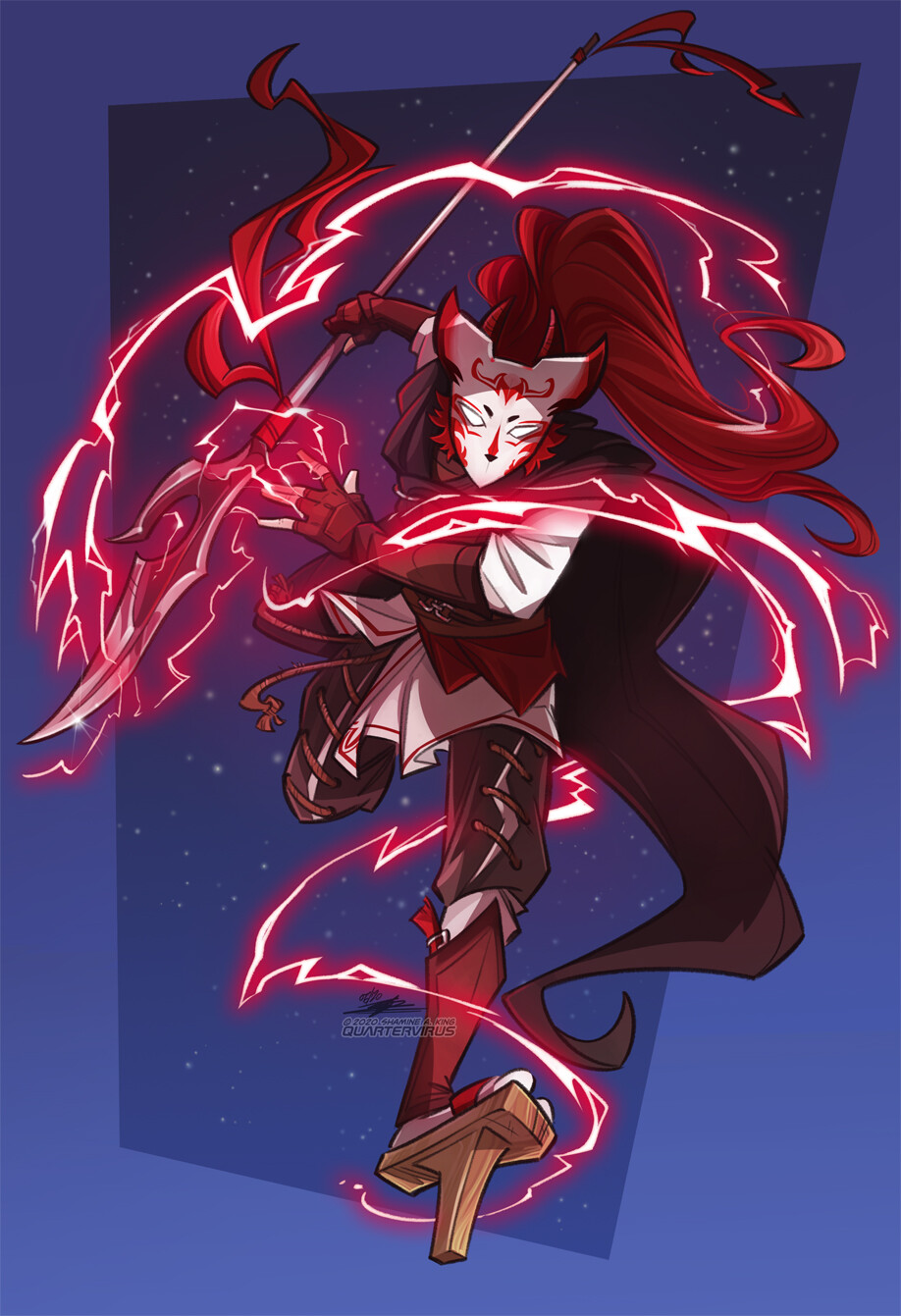 |
| Commission - Like A... Fox in the Night? by Quartervirus |
Protection
Mana cost: 1 green, 1 white.
Casting time: one movement.
Target: visible creature or plant within 10 feet.
Effect: restores 1d6 Guard to the target. Sigil rolls can change the amount of Guard recovered.
Material component: break a lock to restore 1d6 Guard to another fitting target.
Invisibility
Mana cost: 3 black, 2 white.
Casting time: one encounter.
Target: up to 3 touched creatures.
Effect: renders the targets nigh undetectable for 1 hour. Fast movement such as sprinting, attacking, or receiving an attack will break the shroud. Sigil rolls can increase the duration by 20 minutes each.
Material component: consume a piece of fish meat that you have never once looked upon, to allow targets to become ethereal whenever they hold still.
Notes: Errant is the working title for my current RPG project. At least, the one I feel comfortable posting about on this blog. It's been a while, but when I thought about it I have a lot to share, so next week look forward to melee combat! Then maybe summoning, which I may have finished... eventually. Believe it or not, summoning is both entirely separate from spellcasting and maybe even MORE fleshed out, which is a lot for me.
